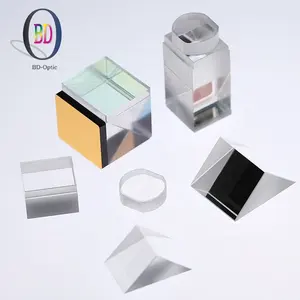



Within the realm of optical instruments, the triangular prism stands out for its unique geometric properties and its ability to manipulate light. This category encompasses a range of prisms, each with a triangle base prism at its core, serving various functions in optical applications.
The triangular shaped prism is a staple in optical experimentation and education, demonstrating the principles of light refraction and dispersion. The right triangular prism, a subset within this category, is particularly noted for its ability to reflect light at precise angles, making it a critical component in optical tools. Beyond the laboratory, triangular prism examples in real life include their use in camera periscopes, binoculars, and even in intricate laser systems.
Optical prisms, especially those with a triangular polygon base, are crafted from materials that prioritize clarity and minimal light absorption. Common materials include glass and acrylic, chosen for their durability and refractive qualities. The 3d triangular prism is designed to ensure that light is accurately manipulated, whether it is being refracted or reflected within the prism's structure.
The triangular prism figure is highly valued for its geometric precision. In comparison to other prisms, the triangular variant ensures that light is consistently refracted or reflected at specific angles, which is essential for applications requiring exact light path control. Furthermore, the equilateral triangle prism variant offers symmetrical refraction angles, a desirable feature in creating balanced light spectrums.
While often confused with pyramidal forms, a triangular prism is distinct in its uniform cross-section along its length, unlike a pyramid triangular prism which tapers to a point. This distinction is crucial in optical applications where the path of light must remain unaltered across the medium. The triangular prism and pyramid also differ in their applications, with prisms being the go-to for precision optics, while pyramids are more commonly found in aesthetic and architectural contexts.
The triangular prism is a fundamental shape in the world of optics, offering a clear example of the principles of light reflection and refraction. Its various forms, including the right angle triangular prism, serve a multitude of purposes across different industries. Alibaba.com's extensive catalog provides a platform for buyers to explore and source these optical components, catering to a diverse range of requirements and applications.